No products in the cart.
Are you baffled to determine what to grow in your shady garden areas? Or are you finding it challenging to get plants to grow on a tricky slope in the yard? Maybe there are areas in the landscaping you cannot mow safely or want a carpet around pavers.
We have the best ground cover plants to solve that annoying problem right here!
What Are Ground Covers For The Garden?
For ground cover plants, you need low-growing perennial plants that do not reach more than a few inches tall. The perennial plant spread quickly, and there are many reasons they are so great to plant.
You can have low-maintenance ground cover plants growing in areas where you cannot grow grass as it needs full sun. Another huge benefit is they grow on a slope or steep hillside where mowing grass becomes difficult.
Furthermore, these ground cover plants help to control erosion and thrive in hot to dry areas with little irrigation. You can grow them as a border to driveways, on lawns, or on patios. You can even plant them in between stepping stones or pavers.
The best is they work well in low to high-foot-traffic areas, and they’re not only cover-ups. In addition, you find many plants outdoors with deep green foliage to flowering ground cover plants adding color to a garden or yard.
Another beneficial thing is the attractive flowers attract pollinators and help prevent soil erosion and grow where other plants cannot thrive, like under trees. Another tip is choosing a ground cover that will not get out of control quickly.
Planting Ground Cover Plants
Choosing a ground cover plant is not about cramming in low-growing perennials. Why? Most are slow growing and only cover the soil surface by the third year. Then, of course, you can find fast-growing species, but the rule is to space your plants equal to their maximum width. Here are some guidelines you can follow:
Space 100 plants about six inches apart to cover an area of 20 square feet.
When spacing the same amount of plants 12 inches apart, these plants cover 85 square feet.
Lastly, spacing 100 plants at 18 inches will cover 200 square feet.
Another rule is to remove any grassy foliage and weeds before planting your ground cover plants. You can use hoes and tillers, or with some time on hand, you can wet the area and cover it with clear plastic for up to six weeks.
Doing this helps solarize the soil.
Then scatter some organic gardening manure on the site and place your plants in zigzag rows on top of the soil. Next, dig the holes at the same depth as the root ball and two to three inches wider.
Keep these plants placed at the same soil level as the pot they arrived in and firm it in with soil and water. End your planting with some organic mulch about six inches from the stems.
Best Evergreen Perennial Plants to Grow as Ground Cover
When you want a dense mat that can handle light foot traffic and thrive in part shade or a rock garden bed, the low-maintenance plants displayed here are what you need.
Bearberry
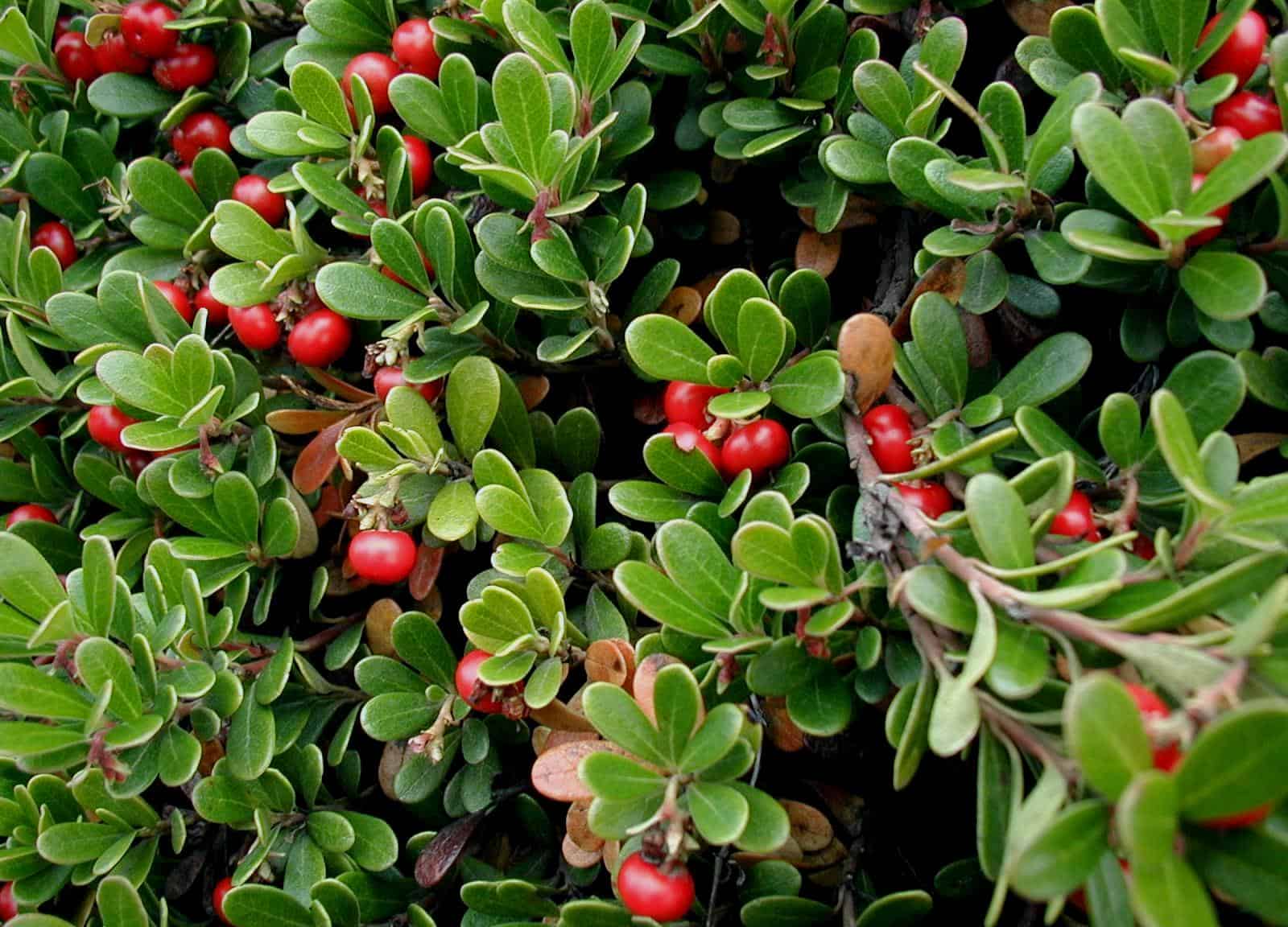
For gardeners wanting to maintain their ground cover quickly, the barberry is a low-growing plant thriving in poor soils. It can grow in sand from the full sun to shade. The evergreen foliage reaches six inches tall with glossy dark green leaves that turn bronze-red in the fall.
While it displays colorful foliage, it also blooms tiny white flowers with a hint of pink in spring, followed by red berries. The fruit attracts birds, and you need to space them 12 inches apart to form a thick carpet.
Bergenia

The bergenia, also known as Elephant’s Ears, has large leathery yet rounded leaves and is an evergreen perennial. You can create interest year-round in the garden. It adds a lot of winter interest as the foliage changes from green to bronze and retains its shape.
The ground cover plants spread via underground stems and grow in direct sunlight to full shade. It also thrives in any soil, from poor to dry ones. It is a low-maintenance ground cover, and you only need to remove that tatty leaves.
Then divide them every few years to fill up the garden beds.
Creeping Junipers
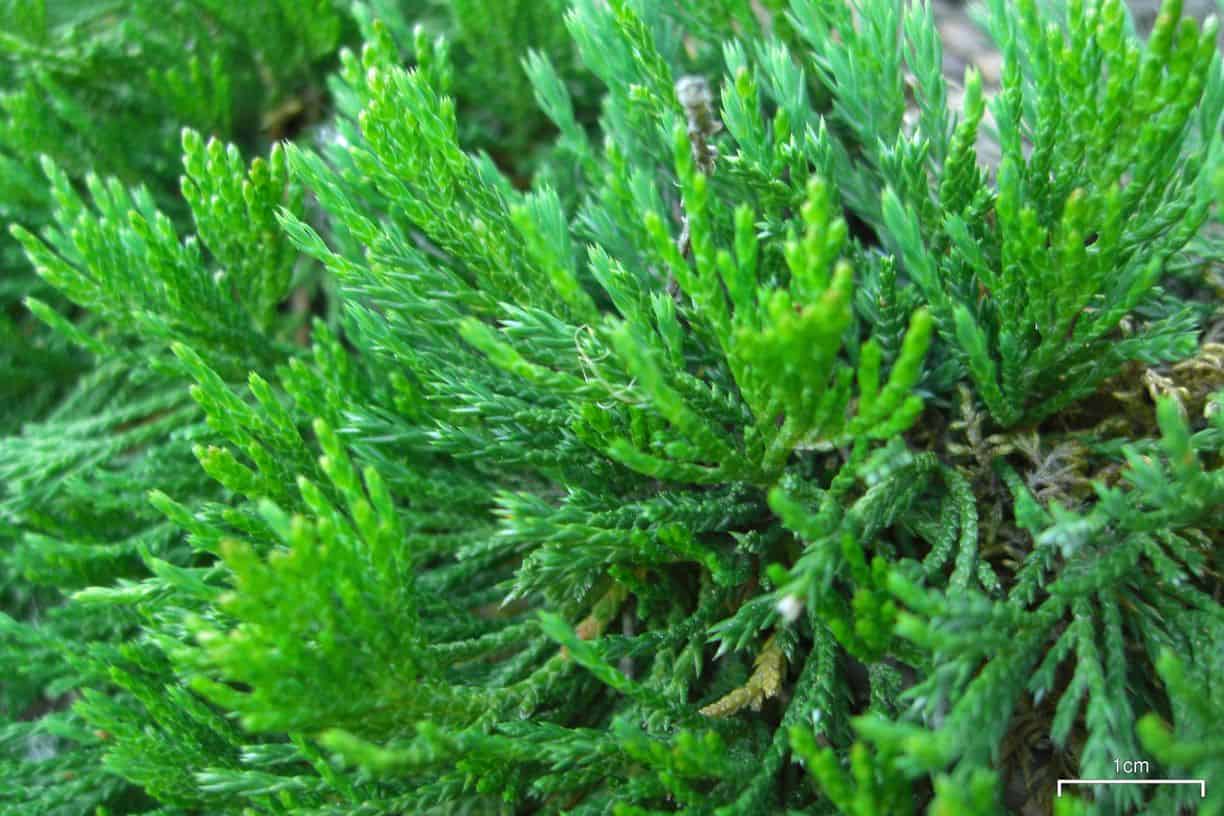
The creeping juniper is a no-nonsense evergreen with compact conifer growth. These are native plants to North America that forms a dense mat. The evergreen foliage is made up of prickly green leaves. It does not grow taller than eight inches.
The best part is it has a good ground cover and is drought tolerant to cope with poor soil and even sloping sites. The narrow green leaves bear small brown or black fruit, and the foliage turns blue-green in spring.
As the season changes to fall, it turns to a plum color and has a spicy fragrance filling the garden. The plant grows well in full sun to light shady areas and rarely needs watering. You can plant creeping juniper on banks and slopes.
Creeping Thyme
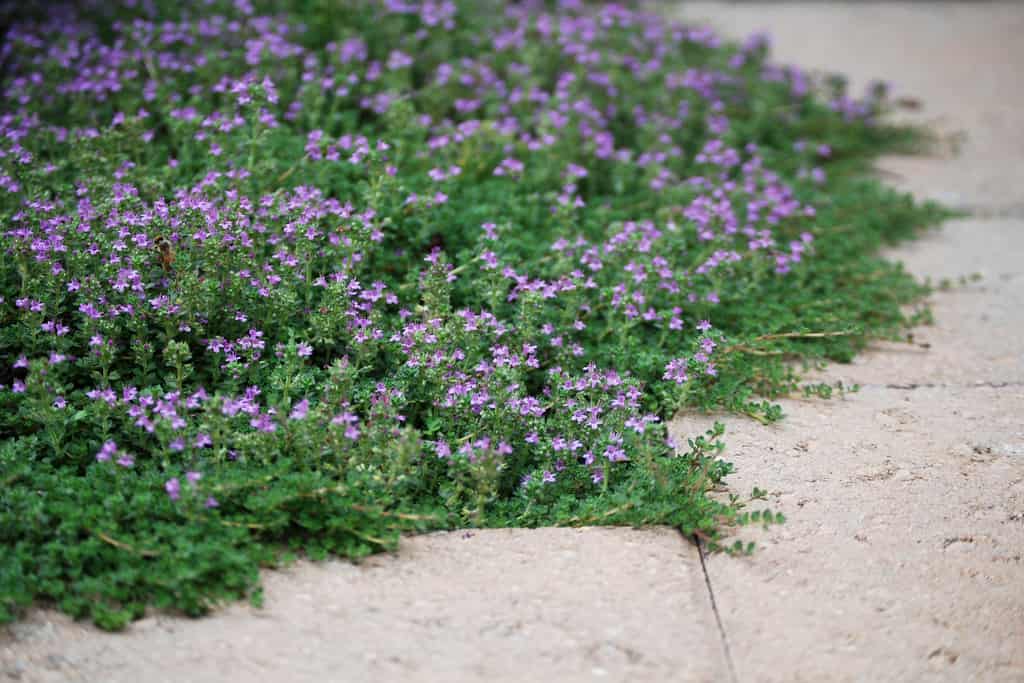
The creeping thyme is an aromatic shrub with low hummocks, tiny green foliage, and clusters of purple flowers. It will quickly colonize rock gardens and make unsightly pavers and patios look beautiful.
The creeping thyme thrives in poor soil types and grows well in coastal areas while coping well with drought and pests. It is deer-resistant, and even rabbits do not like the leaves. The only thing that creeping thyme does not enjoy is harsh winters and too moist soil.
So, create a fragrant carpet with foliage and colorful flowers in your yard today with this amazing plant that thrives in partial shade.
Creeping Phlox

The creeping phlox is a sprawling, slow-growing ground cover plant that forms dense clumps with narrow green foliage. In spring, the creeping phlox puts on a spectacular show covered in shades of purple, bicolor, pink, or white flowers.
It is ideal for edging your sidewalk or walkways. It is not a rowdy neighbor and looks great with spring bulbs like daffodils or tulips. While it can handle partial shade, it prefers full sun and moist, well-drained soil. The plant reaches eight inches tall.
Deadnettle
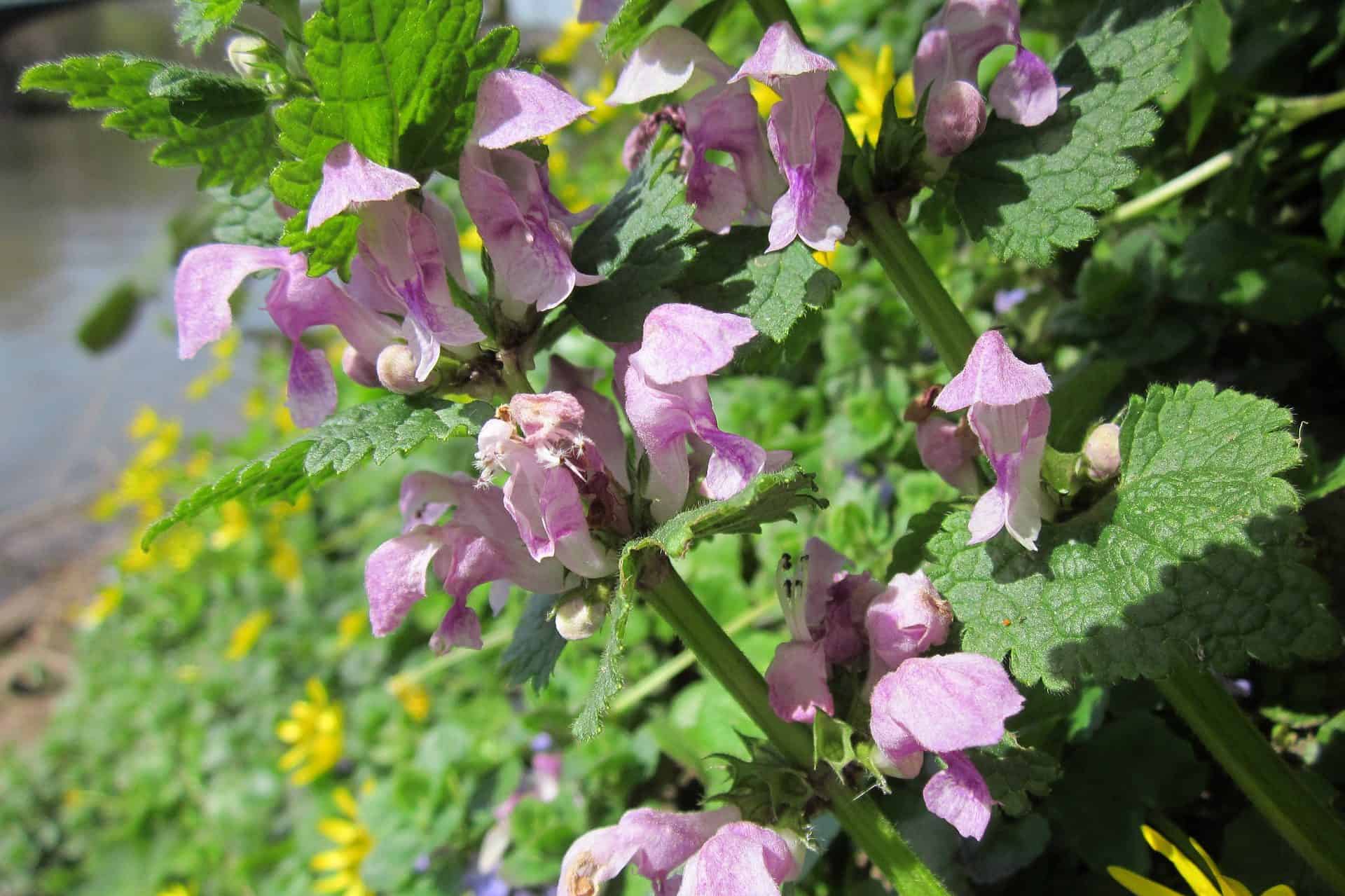
Dead nettle prefers shade and covers a large area in unforgiving conditions. The dead nettle is deer resistant and is cold, heat, and drought tolerant. It grows in average soil; in the growing season, you see it completely covered with white or pink flowers.
Hostas
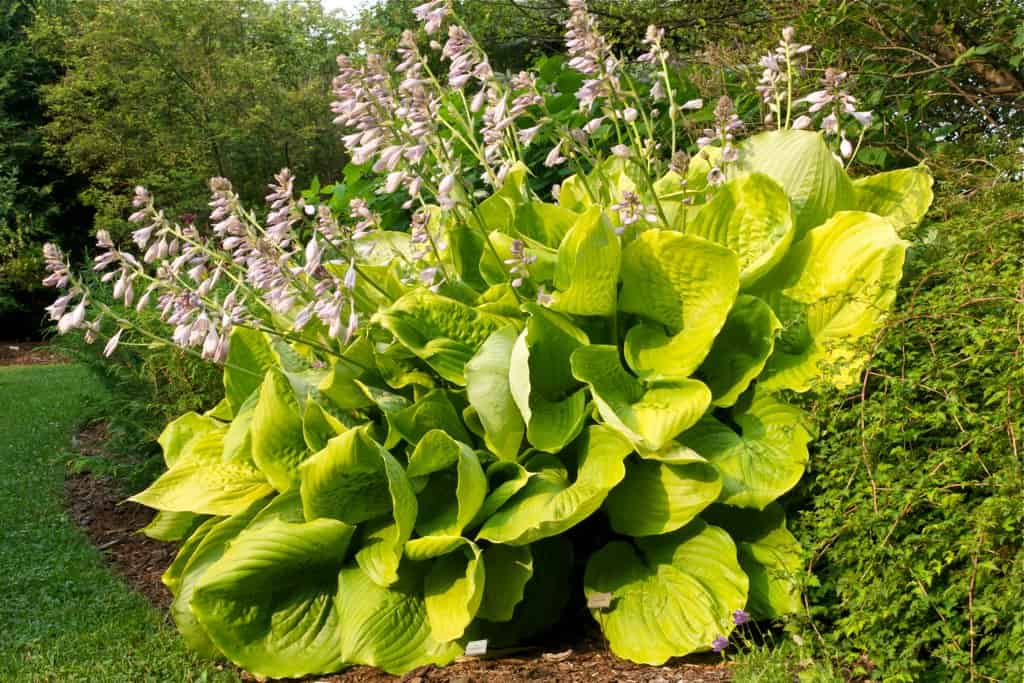
Another reliable ground that covers perennials is the hosta, whose foliage varies from lime and white to variegated green. The blooms shop up on tall spikes in tiny white or purple flowers.
Hostas are also called plantain lilies; some have foot-long dark green foliage. You can divide them to plant in a shady spot in the garden. They prefer shade with moisture in the soil, and heights can vary.
Interrupted Fern
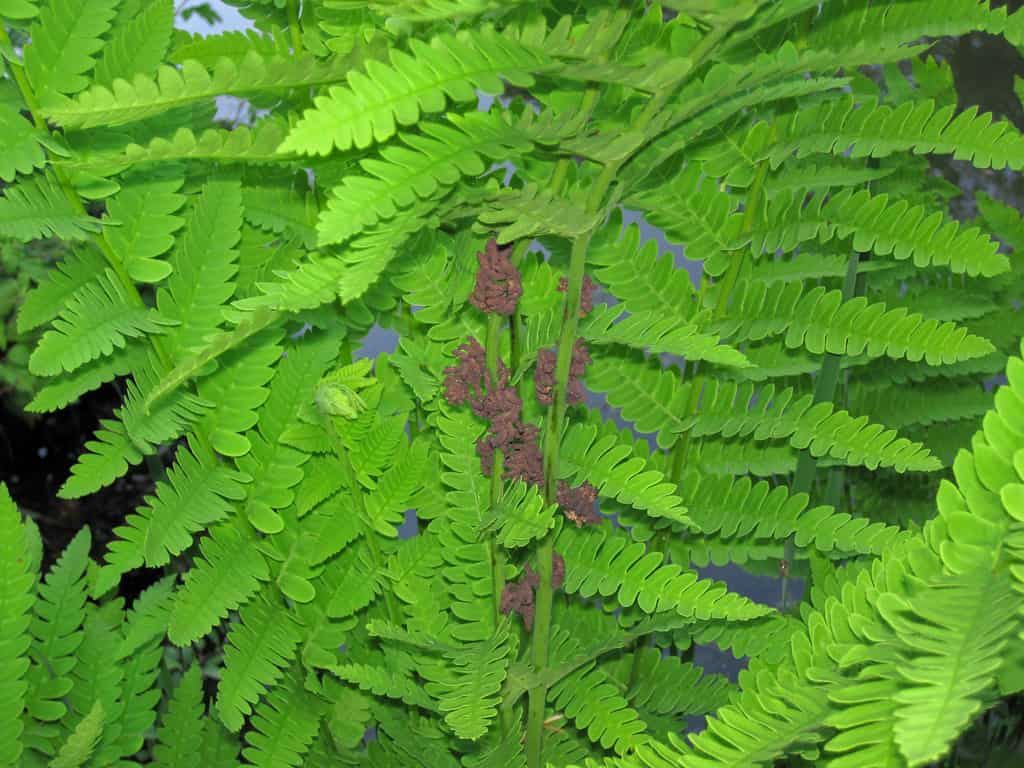
The native plant of North America is a low-maintenance ground cover plant that thrives in well-drained soil. The plant spread via underground rhizomes, doubling up as an edged sword. Yet, it does not have an invasive spread and has pretty foliage. The plant thrives in full to part shade.
Lenten Rose
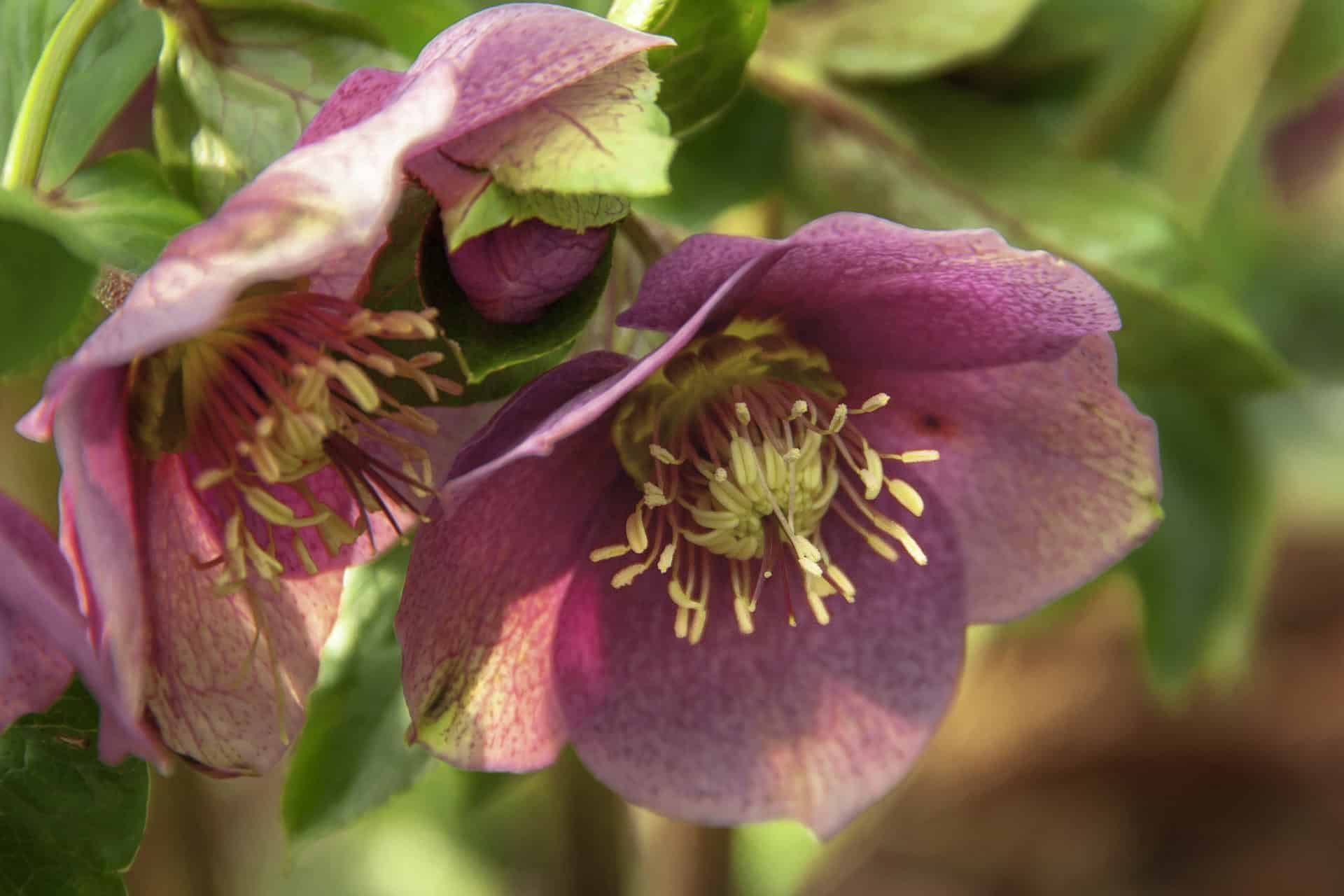
The low-maintenance ground cover is not a rose but belongs to the buttercup family. These are early spring bloomers, and the flowers display at ground level in the late winter. The deer-resistant plant is best planted in early fall or late spring, away from bitter cold winds.
You only need to maintain the foliage by removing the tattered leaves and can divide the plants in spring to add to your ground cover plants. The plant thrives in well-drained loamy, and moist soil in partial to full shade.
But the plant is toxic to animals.
Liriope
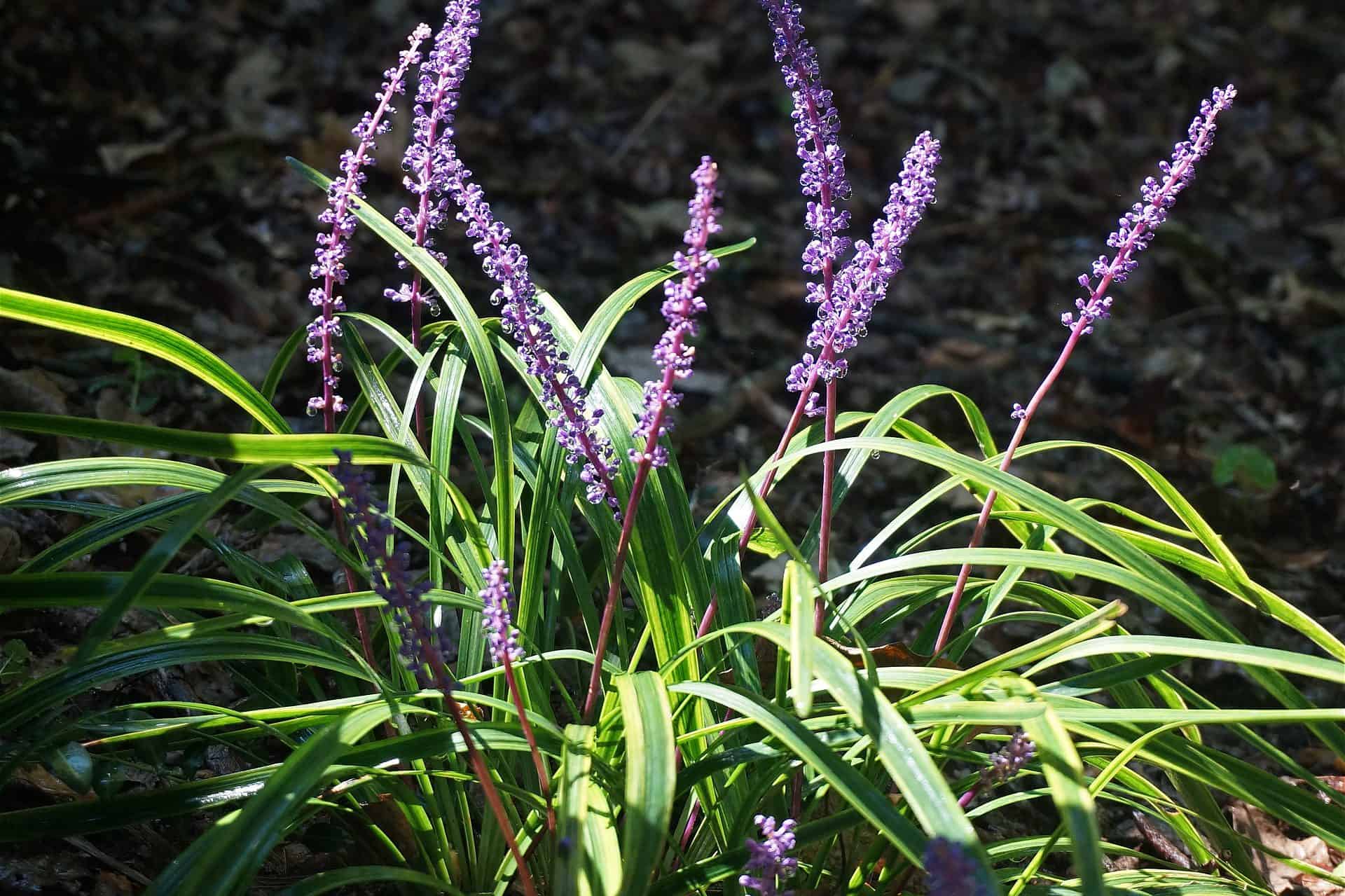
The lily turf grass is a hardy ground cover plant that can grow well underneath other shrubs. It has a clumping form, and you can also find creeping varieties. In spring to late summer, white, purple, or blue flowers appear on spikes.
It can thrive in gardens with full sun but does well in the shade when planted in moist soil. Depending on where you live, it can remain green, but in colder areas, it can turn brown in winter. It makes for a gorgeous garden border where grass does not grow.
Mondo Grassy Foliage
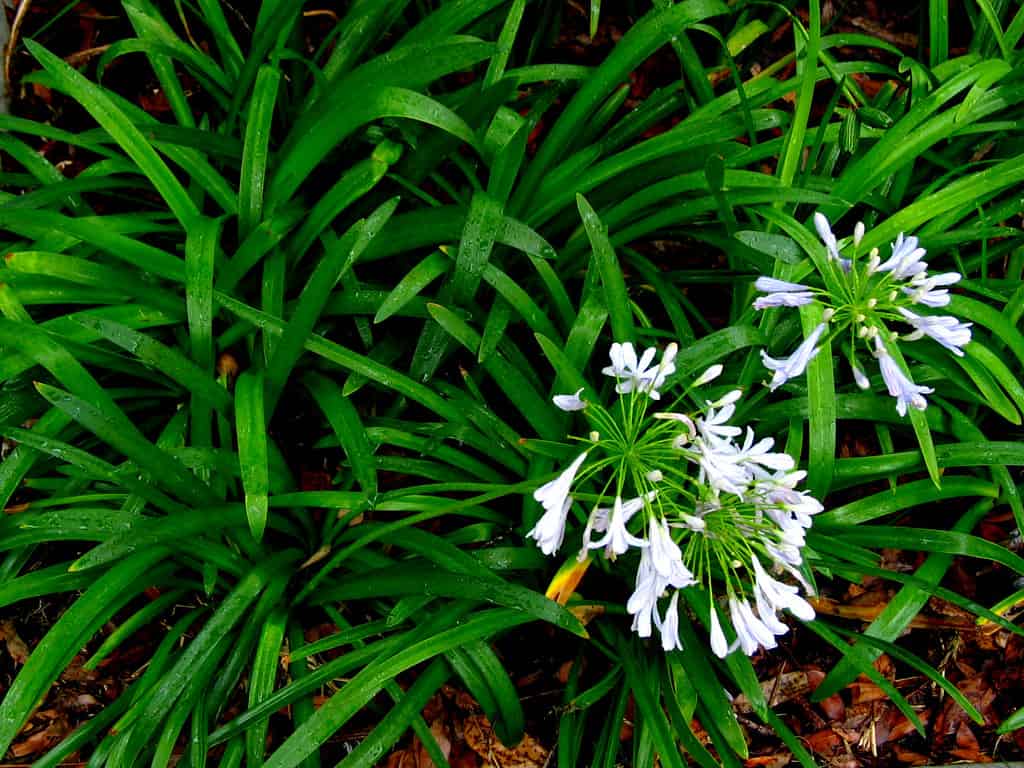
The mondo grass is ideal for a low-growing perennial grass to plant in groups. The black mondo grass is one of the dramatic choices for modern gardens. The clumps of strappy purple-colored leaves display violet flowers during summer, followed by black berries.
For scorching parts of the countries, grow them in the part sun while in cooler climates, in direct sunlight. The ground cover flourishes in well-drained soil on the acidic side. Each clump spreads up to 12 inches and grows well in all parts of the USA.
It is a stylish summer and winter attraction that adds a contemporary look.
Mother of Thousands
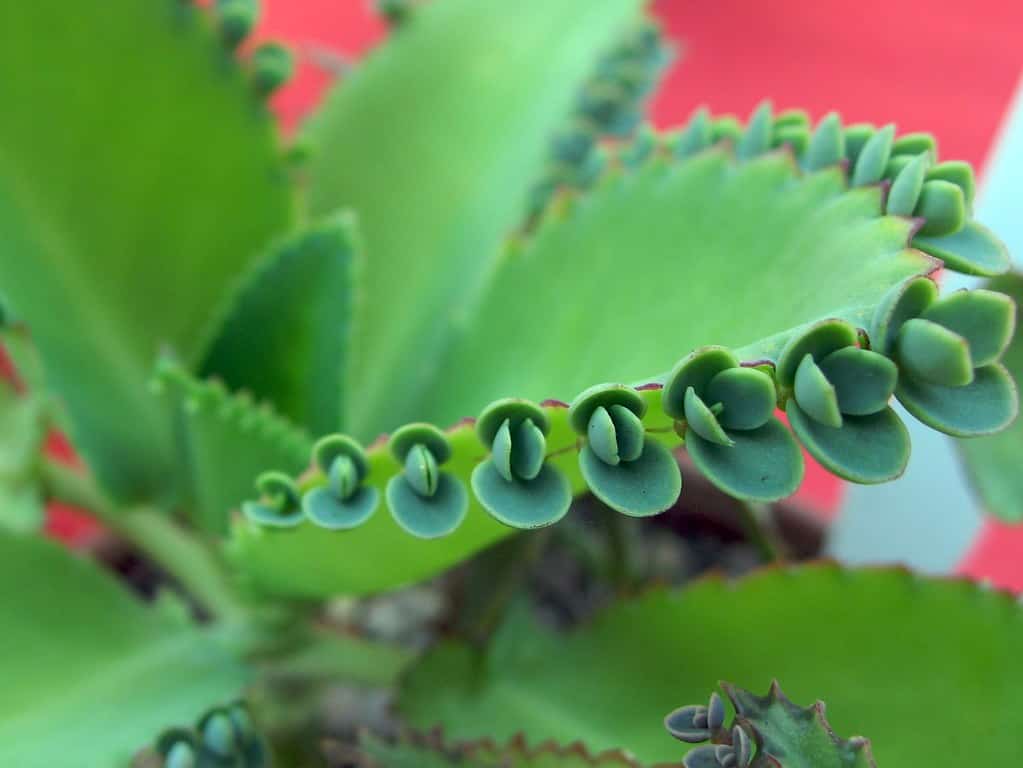
The mother of thousands is a good ground cover as it produces offspring. It forms clumps of silver-veined leaves and sends thin red stolons searching for new ground. It brightens up any shady spot with high plumes of tiny flowers in white in late spring.
Still, it needs acidic woodland soils but can grow in clay soil. It can endure long summers in the South.
Periwinkles
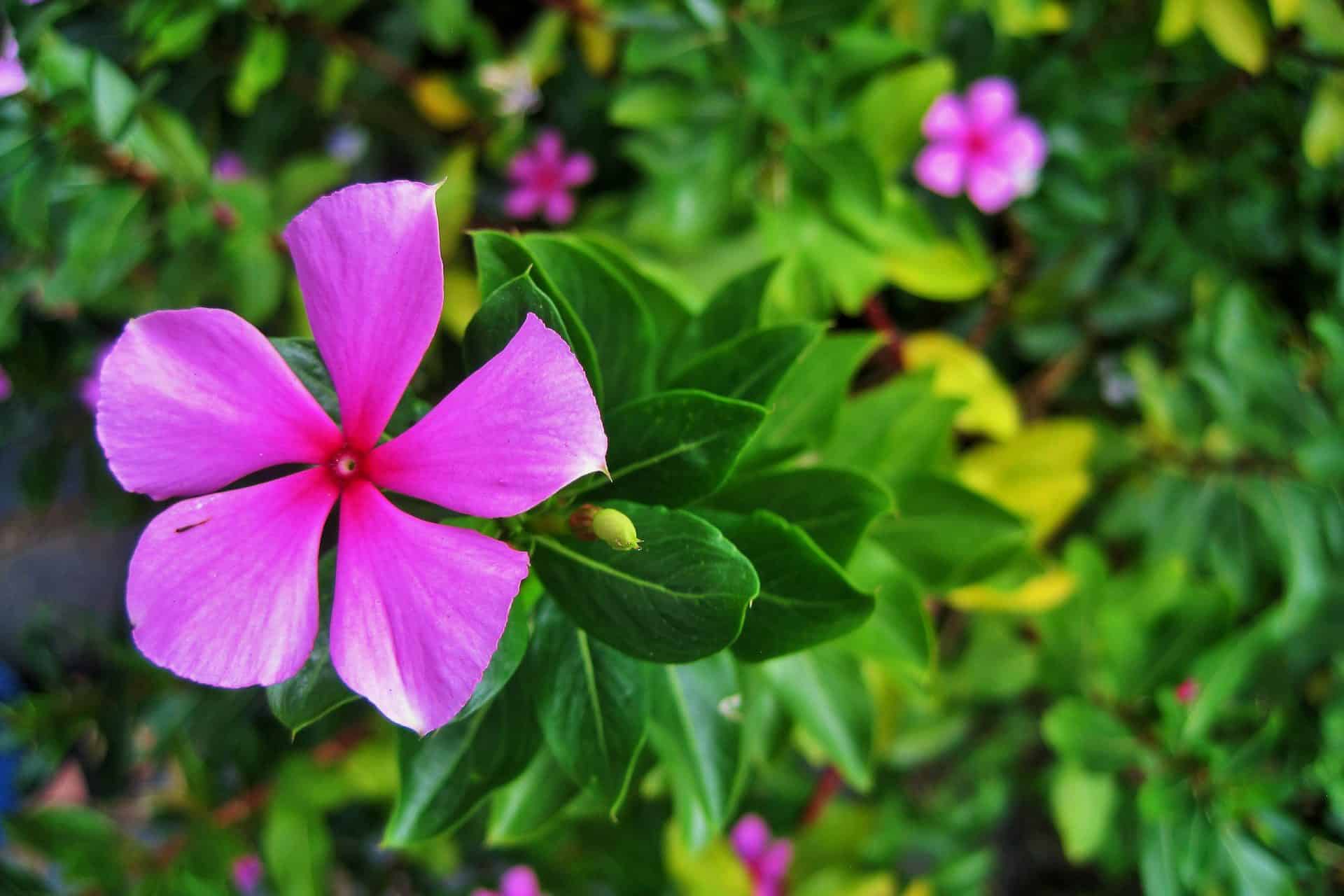
It is a fast-growing ground cover suitable to grow in well-drained soil in part to full shade. It has long evergreen tentacles that display white, purple, or blue flowers from spring to late summer.
The dense root system is ideal for planting in sloping gardens. It will help control erosion, and animals will leave the foliage alone. Still, check your state if it is not registered as an invasive species. It is also a very poisonous plant for a dog and cats.
Sedum
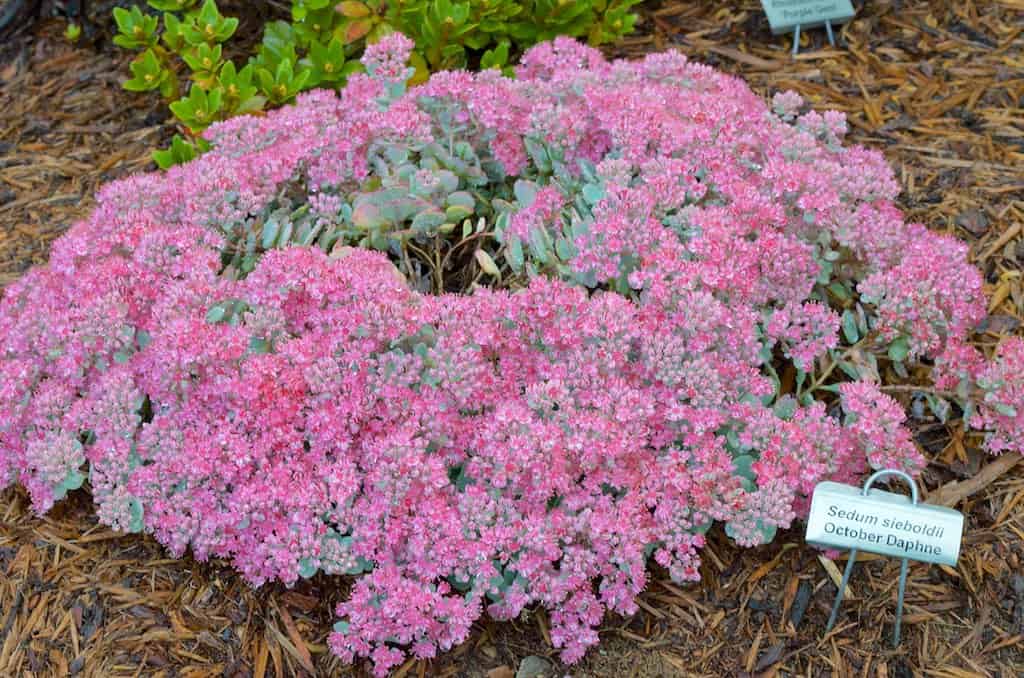
You find the sedum in different shapes and sizes with a low-growing habit ideal for ground cover. The plants thrive on hot, dry slopes where you see nothing else growing. As it spreads, it forms a mat; some are drought-tolerant.
The sedum can withstand abuse for light foot traffic, and the blossoms attract pollinators like bees. You have two excellent choices hardy in zone 4 called the John Creech, a two-row sedum with pink flowers.
Then you have Fuldaglut, another two-row sedum with purple to red leaves and rose-red flowers. Both these are ideal ground covers for full sun to full shade.
Sweet Woodruff
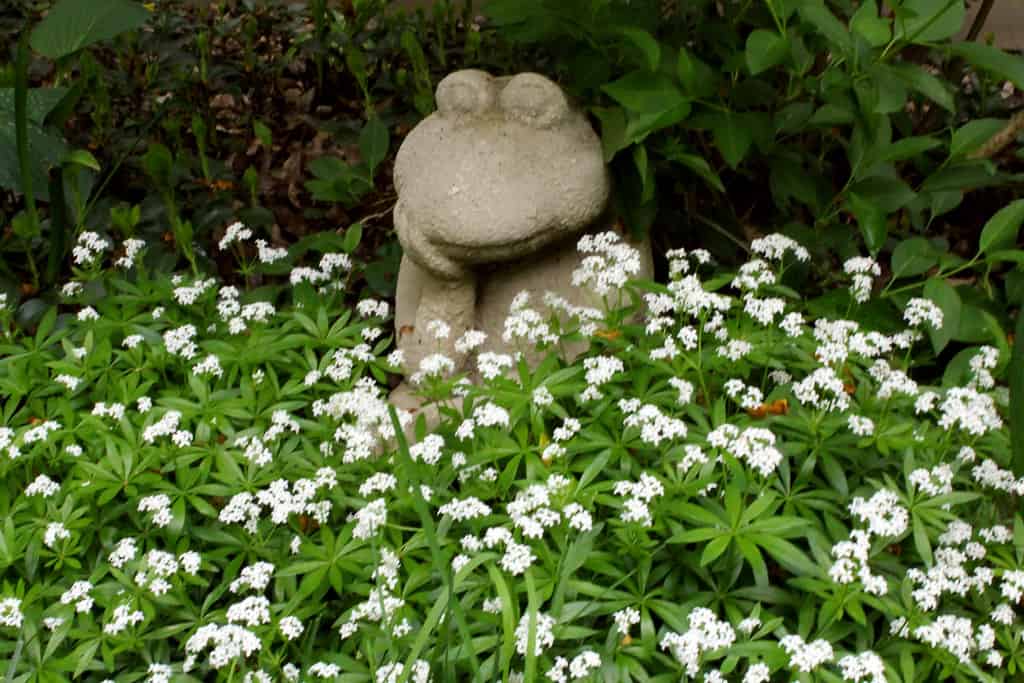
The sweet woodruff is what you need if you need ground cover plants for a shady spot. It adds a pleasant fragrance to the landscape as the leaves smell like fresh hay when your mow or crush them.
In spring, you see tiny white flowers, and it is not an invasive species but can become a bit exuberant under the right growing conditions when receiving loads of moisture. Grow sweet woodruff partly to full shade and soil that drains well.
The plant reaches up to 12 inches tall and thrives in the USDA zones 4 to 8.
Wild Ginger
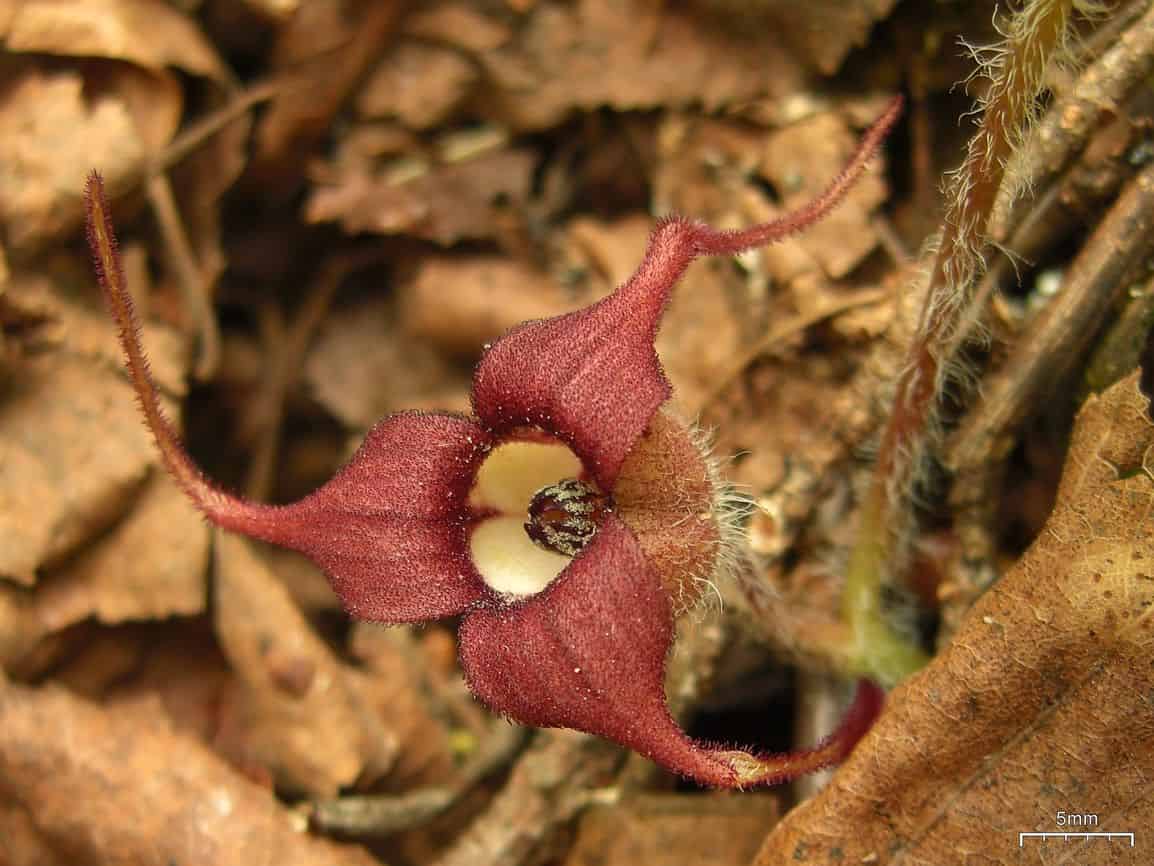
The ground cover plants are prized for their glossy heart-shaped leaves, but it does have vigorous growth. But not in an invasive way but wastes no time to form a colony in the landscape. It thrives in well-drained soil in full shade or part shade and reaches up to four inches tall.
Wishbone Ground Cover Plants
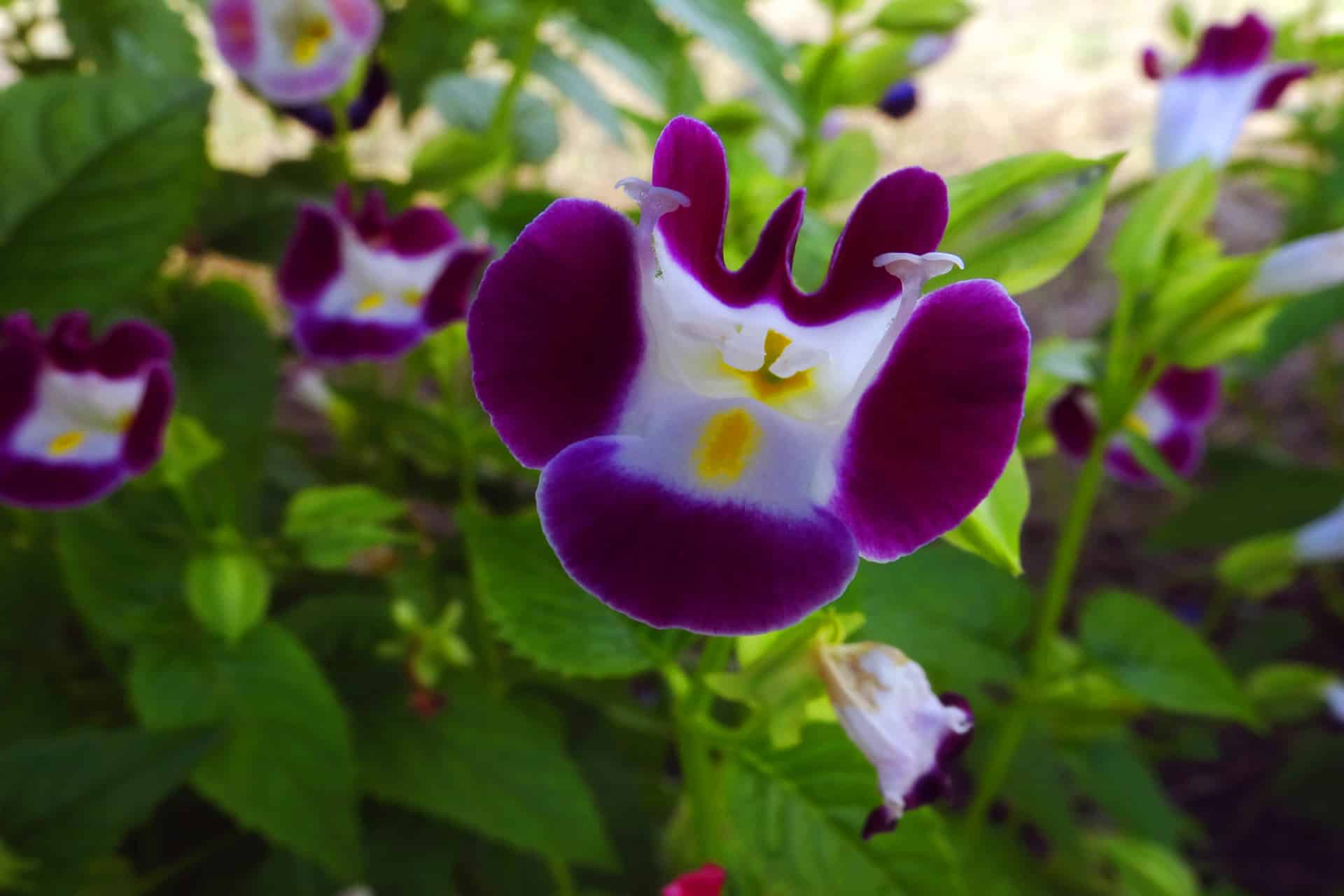
The bluewings or clown flower is treated as an annual and grows well in shady growing conditions. The plant prefers moist, well-drained soil and forms trumpet-shaped white, yellow, purple, or bright pink flowers. The leaves are light green and oval and produce vibrant colors in the shadiest part of the garden.
Final Thought
We at Plantly are often asked about what makes excellent ground covers when choosing plants. Well, the important thing is to choose plants that can provide a rapid yet dense mat growth to help suppress the germination of weeds.
Furthermore, the plant needs to help eliminate weeding while growing in the shadiest spots of the garden. All the plants on the list provide outstanding ground coverage to grow in full sun to part shade and need occasional watering.
So, pick ground covers that need minimal trimming and are low-growing year-round.
Frequently Asked Questions
The creeping thyme, mondo grass, sedum, and begonia are some low-maintenance ground cover plants you can grow in direct sunlight to part shade.
The dwarf mondo, sedum, and thyme are ideal for growing along garden paths.
We recommend creeping phlox, sedum, creeping junipers, and sweet woodruff as ideal candidates for large areas.
English ivy is a super tough ground cover, as it is hardy and adapts to most soil types in full sun with partial shade. But these species can become invasive as the seeds travel far in the wind.
Whether you want to buy, sell, or simply reach out to other plant enthusiasts, Plantly is the right place to be!


